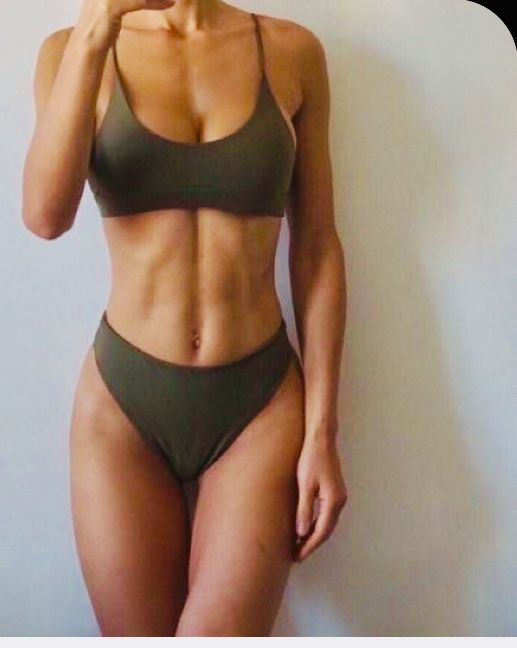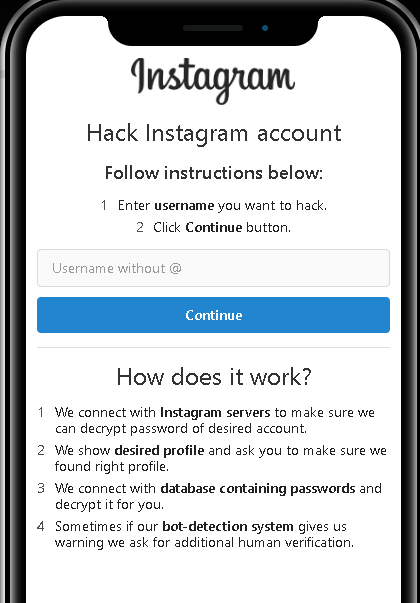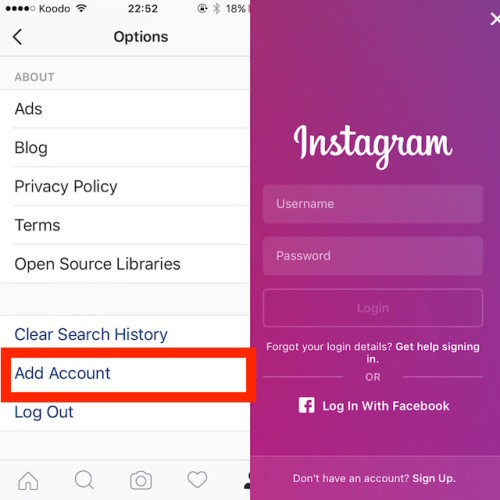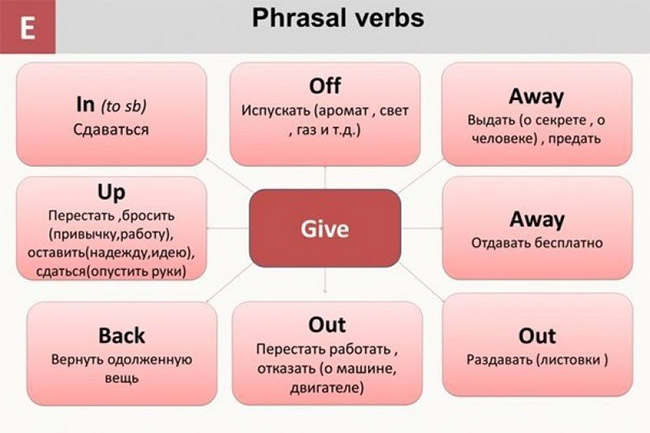How to start a personal blog on instagram
How to Start an Instagram Blog in 8 Steps
If you’re wondering how to start an Instagram blog with no experience, you’ll be happy to know it’s easy to start. Instagram blogging is microblogging because of the 2,200 character limit for captions vs no limit on traditional blogging platforms. Instagram bloggers with 15,000 engaged followers can make around $200 per sponsored post.
Many people start a blog on Instagram with the intention to sell products out of the gate. If this is your goal, you can get started for free with Square Online. It has the easiest setup process, and you don’t pay a dime until you make a sale. This is perfect for Instagram bloggers who don’t have months to build a full-fledged ecommerce store. Get started for free today.
Visit Square Online
Here are the eight steps on how to start an Instagram blog:
1. Create an Instagram Account
Creating an Instagram account is free and takes just a few minutes to do. The step that takes the longest is figuring out what you want your username to be. Keep in mind that unlike other social media platforms, you can change your username later on. However, many prefer to use their full name as a username so they build a personal brand.
Get started with your Instagram account in just a few steps:
- Download the Instagram app from the Google’s Play store (Android) or App Store (iPhone).
- Once installed, tap the Instagram icon to open it.
- Sign up with your email address or phone number if you’re on an Android. If using an iPhone, you’ll select Create an Account then enter your phone number. You’ll get a text with a verification code to enter. Alternately, you can use a single-sign-on by selecting your Facebook login.
- You’ll then receive a prompt to create a username and password.
- Make sure to have a public profile instead of a private one, unless you only want friends and family you allow reading your blog.
Users can also sign up for Instagram from a desktop now. You may have more than one Instagram account.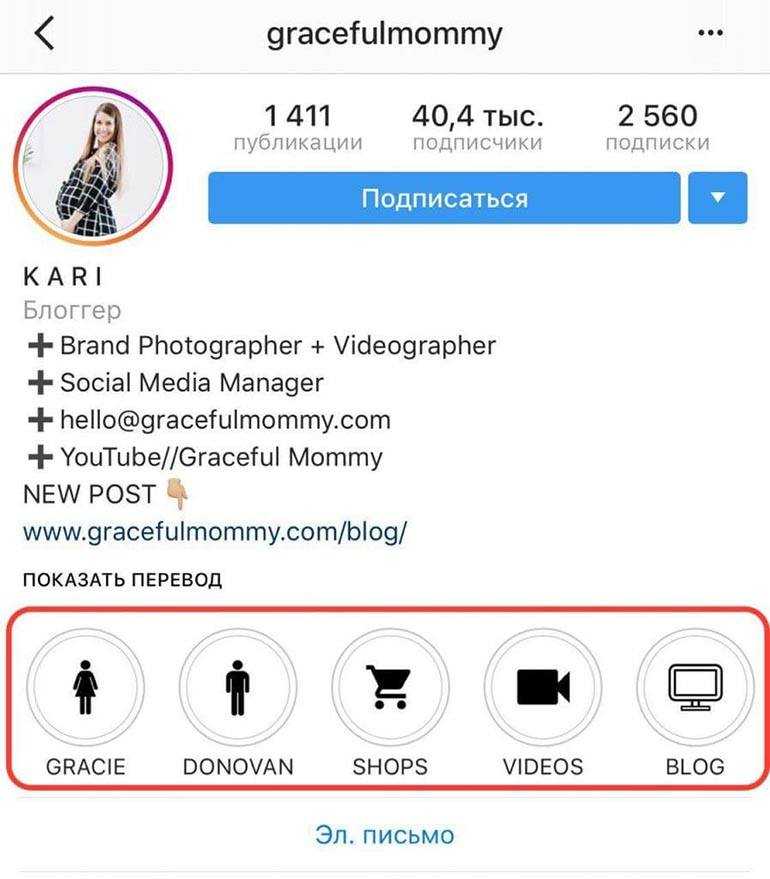 Some people choose to have an account for their personal brand as well as a company (such as an ecommerce store or podcast).
Some people choose to have an account for their personal brand as well as a company (such as an ecommerce store or podcast).
2. Choose a Niche for Your Instagram Blog
When learning how to start an Instagram blog, the key to gaining consistent growth is to give your audience what they’ve come to expect. If you are a travel Instagram blogger and then post a sponsored ad for a recliner, you’re not only going to confuse followers but you might cause them to unsubscribe. By choosing a niche for your Instagram blog, you’re telling people who come to your blog exactly what kind of content they’ll get going forward if they follow you.
It’s important that you take careful consideration when choosing a niche. While you can change your focus later on, doing so can confuse your audience. Some Instagram bloggers start with a broad category such as a lifestyle blog before deciding on a narrower niche like travel or parenting. It’s also important to understand that many Instagram bloggers also eventually create a blog on a website, which doesn’t have any limits on the number of characters you can write.
Travel
Within a travel niche, you can get even more specific. Some Instagram blogs focus solely on domestic travel or on international travel. There are entire blogs dedicated to just Disney travel. Other travel niches include solo travel, plus size travel, family travel, and traveling with pets. There’s even a travel Instagramer who dedicates her account to camping in her living room thanks to the COVID-19 pandemic.
Some Instagram travel bloggers find success monetizing through hosting travel tours. There are many bloggers who also teach others how to travel more, whether that’s by using travel rewards through credit cards or selling everything you own to travel. As a fellow travel blogger, I follow many travel bloggers on Instagram to get ideas for new places to visit.
The Blonde Abroad is a popular travel Instagram blog. She also has a blog on her website, a YouTube channel, a private Facebook community, and hosts tours around the world.
Lifestyle
A lifestyle Instagram blog often features photos and posts of everyday activities, hobbies, or insights.![]() These bloggers tend to stick with a few categories rather than posting anything and everything they enjoy. For example, a lifestyle blogger may post about family, travel, food, and money.
These bloggers tend to stick with a few categories rather than posting anything and everything they enjoy. For example, a lifestyle blogger may post about family, travel, food, and money.
Many lifestyle Instagram bloggers monetize their content through brand partnerships. These brand partnerships are often sponsored posts, where an Instagrammer gets paid to do a static Instagram post or Instagram story about a product. Sometimes, they do affiliate programs with different brands and earn a commission on any sales referrals.
Rebeka Rpati is a lifestyle blogger who also has a blue verified check mark to her name. This is likely because she’s Miss Universe Hungary and a TV presenter. This lets other users know this is a legitimate account for this public figure.
Food
Food Instagram bloggers come in many niches as well. You’ve got bloggers who talk about things like baking, grilling, sous vide, and candy. There are bloggers who are diet-specific such as keto, paleo, and gluten-free.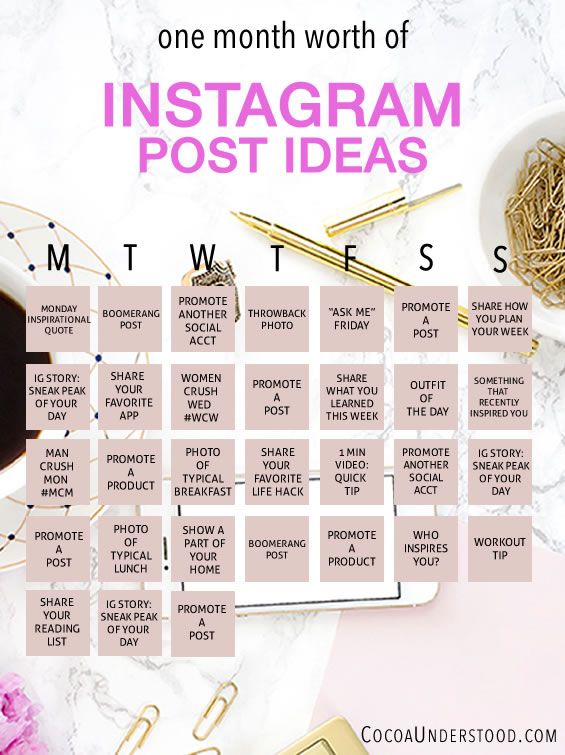 Some bloggers also choose to showcase food found during their travels or only food of a specific location such as NYC food carts.
Some bloggers also choose to showcase food found during their travels or only food of a specific location such as NYC food carts.
Instagram food bloggers can monetize their blogs through brand partnerships, writing cookbooks, or creating their own kitchen gadgets. A sous vide blogger showing a recipe that uses sous vide might give a list of their favorite sous vide machines while using affiliate links.
Pinch of Yum is a Minnesota-based couple who are not only food bloggers, but also host food photography workshops and run a food blogger membership site teaching others how to have their own food blog.
Money
Instagram money bloggers write about many different money-based topics. These topics include personal finance, credit cards, paying off debt, making money, investing, and even investment-specific niches like Forex or cryptocurrency.
Money bloggers earn money through partnerships, sponsored posts, and affiliate links. Popular money bloggers have created their own tools like budget binders and planners.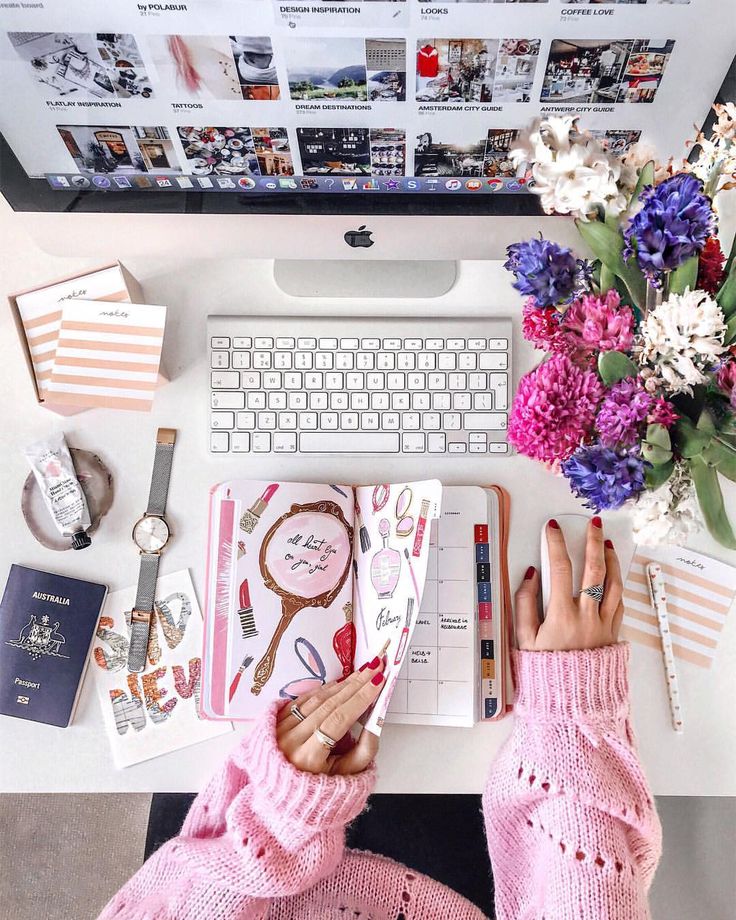 Online courses, coaching, consulting, and membership sites are also popular monetization strategies for money bloggers.
Online courses, coaching, consulting, and membership sites are also popular monetization strategies for money bloggers.
Ramit Sethi is a personal finance blogger behind the NY Times Bestseller, “I Will Teach You to Be Rich.”
3. Create a Captivating Bio
An Instagram bio is a little snippet of text below your picture within your Instagram profile. An Instagram profile is where users view your profile, photo, and all of the posts you’ve created. It’s also where users go to follow you. This bio area is an opportunity to show everyone who you are, what you stand for, and who you serve within 150 characters. It’s a chance for you to make a good first impression, so you’ll want to spend some time crafting a captivating bio.
As an Instagram blogger, it’s important for you to give visitors to your profile a sneak peek at what they can expect if they follow you. Some users choose to give their contact information like an email address or a phone number—particularly if they are a business or if want someone to get in touch about collaboration opportunities.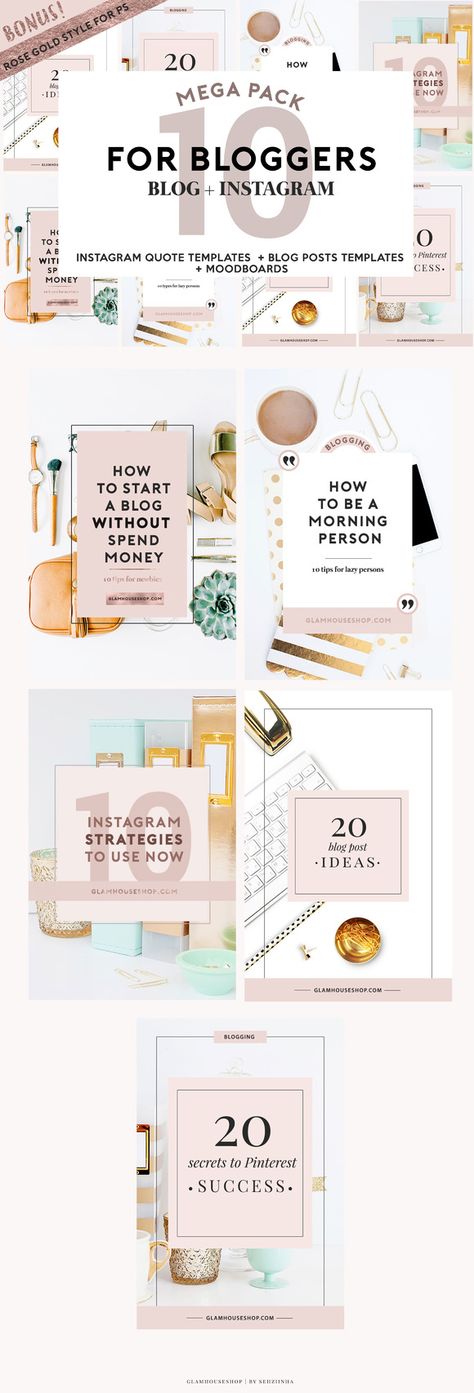 Others prefer to share a quote, their location, and maybe even some hobbies.
Others prefer to share a quote, their location, and maybe even some hobbies.
Whatever you choose to showcase in your bio, remember to tailor it to your niche and your desired audience. When you are very specific about who you are, you are more likely to attract people who are just like you and want to engage with your content.
On my Instagram bio, it’s clear that I’m a travel blogger. Readers can expect to see travel photos, our homestead, and my family.
4. Take or Source Attractive Images
Instagram is a visual platform where the photos you showcase matter more than the captions. Photos you share need to follow your brand identity design so that the style of your image is recognized as yours before a user checks to be sure it is.
This aesthetic should remain consistent throughout your Instagram posts. This helps create a cohesive look to your profile. It’s important to note that you don’t have to always use your own images to post. There are many free stock photo websites to use such as Pexels and Pixabay. Many of these images don’t require attribution, but it’s best to double-check what the restrictions are on each photo.
Many of these images don’t require attribution, but it’s best to double-check what the restrictions are on each photo.
Each of these photos from Pexels has the same warm mood and would work well on the same Instagram feed.
5. Write Your Instagram Blog Posts
An Instagram blog post is also known as a caption. Your captions can be no more than 2,200 characters. For this reason, many consider that using Instagram for blogging means that you’re microblogging compared to writing a full-fledged blog hosted on your own website.
Your blog posts don’t necessarily have to be 2,200 words to tell a story. Many times captions that are short and thought-provoking do really well on Instagram. The most important lines in your captions are the first line and then your call to action line.
The first line you write should grab a reader’s attention. Think of it as a one-liner—what’s going to stop someone from scrolling by your post in their news feed? This should be a relatively short line so they can read it without having to click “more” to view the rest of your caption.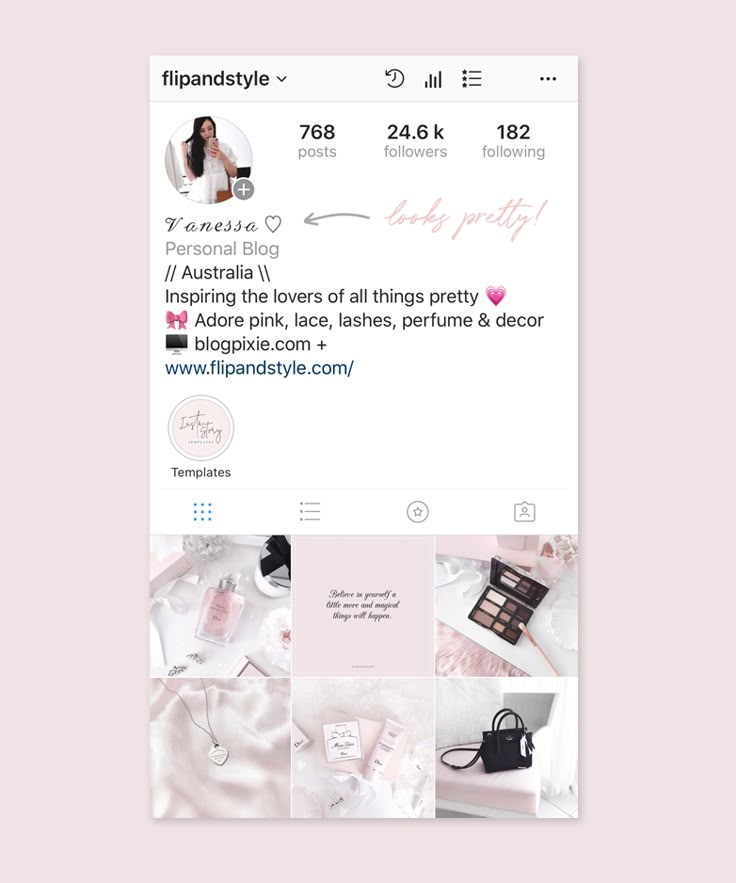 Give an intriguing statement, prompt an emotional response, or share an offer.
Give an intriguing statement, prompt an emotional response, or share an offer.
Your last line should give a call to action (CTA). The CTA can be as simple as asking your followers to engage with you in the comment section. Or, your CTA might ask to tag a friend, check out the link in your bio for more information, or hit the follow button. A popular CTA is “double tap if you agree,” referencing the act one performs to “like” your Instagram image.
Another important element when creating your Instagram blog posts is to make sure you’re breaking up the text if you’re writing a lot. It is difficult to read a huge wall of text without natural line breaks. You want your content to be easy-to-digest. Instagram doesn’t make it easy to do this within the app, so many people write their draft in notes or a word processing document before copying and pasting it into the platform to preserve the formatting.
6. Use Relevant Hashtags to Boost Discoverability
A hashtag is a word or phrase, preceded by a hash sign (#). These hashtags allow users to find messages about a given topic. For example, when entering the hashtag #travelinspo in the search field on Instagram, it shows travel photos.
These hashtags allow users to find messages about a given topic. For example, when entering the hashtag #travelinspo in the search field on Instagram, it shows travel photos.
You can use hashtags on both static Instagram posts and Instagram stories. With static posts, you can use up to 30 hashtags. You may add up to 10 hashtags in a story. When using hashtags, even non-followers can find your content if they’re searching for that particular hashtag. This allows Instagram bloggers to reach new audiences and grow their following.
To find relevant hashtags to use, many bloggers like the program Later.com. With it, you provide a hashtag you want to use and it will give you suggestions of similar hashtags, or hashtags commonly used with that hashtag. The program will let you know as soon as you’ve hit your 30 hashtag limit for your caption.
There are 48 million posts with the #travelblogger hashtag. Users can follow a hashtag to see these posts in their news feed without following each individual creator.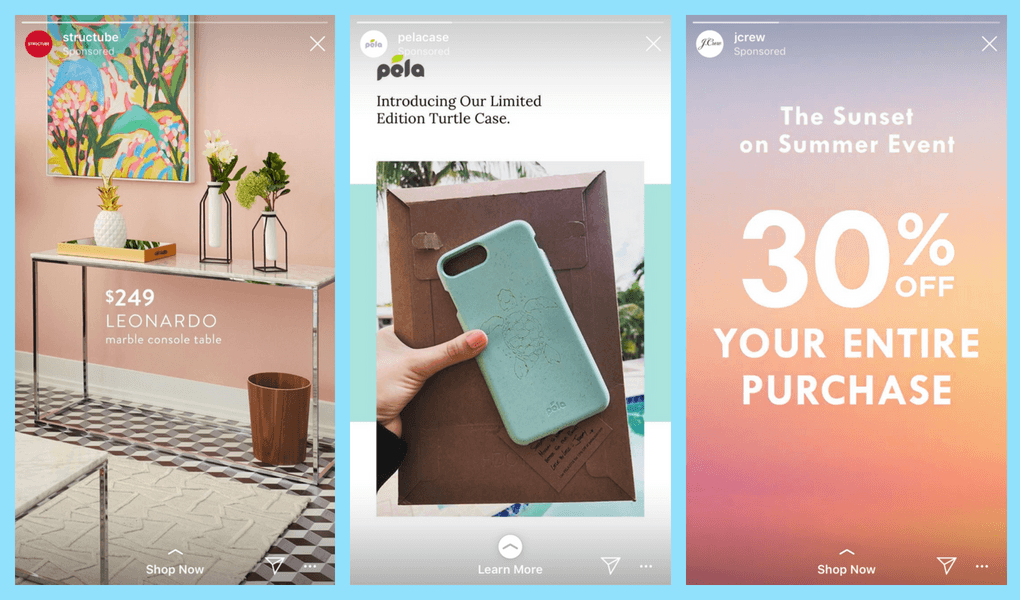
7. Geotag Your Posts
To geotag a post, you’re simply adding a geographical location to tell others where a photo is taken. Some users prefer to be very detailed about where an image was taken, such as the exact name of a coffee shop. Others prefer to be more general, such as tagging Manhattan or even New York.
Geotagging lets others see where you’re at. It also helps others find images from a particular location. A user can search Instagram by location to find others who’ve been to a spot they’re researching. Including your location allows bloggers to grow their audience because Instagram users can search for location-based posts and stumble upon any post that has a geotag. If a user likes what you’ve posted, you might gain a new follower—all because you’ve tagged your location.
This Instagram blogger has geotagged their location as Manarola, Le Cinque Terre, which is in Italy.
8. Interact With Other Instagram Users
The entire point of using social media is to be social—this involves interacting with other users on Instagram. You can like and comment on other users’ posts, and you can follow them. When you interact with other users, they’re more likely to check out your profile and microblog. If they like what they see, there’s a chance they’ll follow you back or at least leave a like or comment to return the favor.
You can like and comment on other users’ posts, and you can follow them. When you interact with other users, they’re more likely to check out your profile and microblog. If they like what they see, there’s a chance they’ll follow you back or at least leave a like or comment to return the favor.
Use Instagram Stories
One of the most popular features of Instagram is using Instagram Stories. A story acts like a slideshow that is only available for 24 hours on your Instagram Story feed, unless you choose to feature it. When you feature the Instagram Story it will remain on your profile in the Highlight section until you remove it.
Within these Instagram stories, users can share images, videos, and text. Stories are much less curated than a static post that shows up in your Instagram feed and remain forever on your profile unless you choose to delete it. Many users choose to showcase behind-the-scenes footage of their daily lives on their stories. You can also create polls, share GIFs, and post a story for a select group of people to see.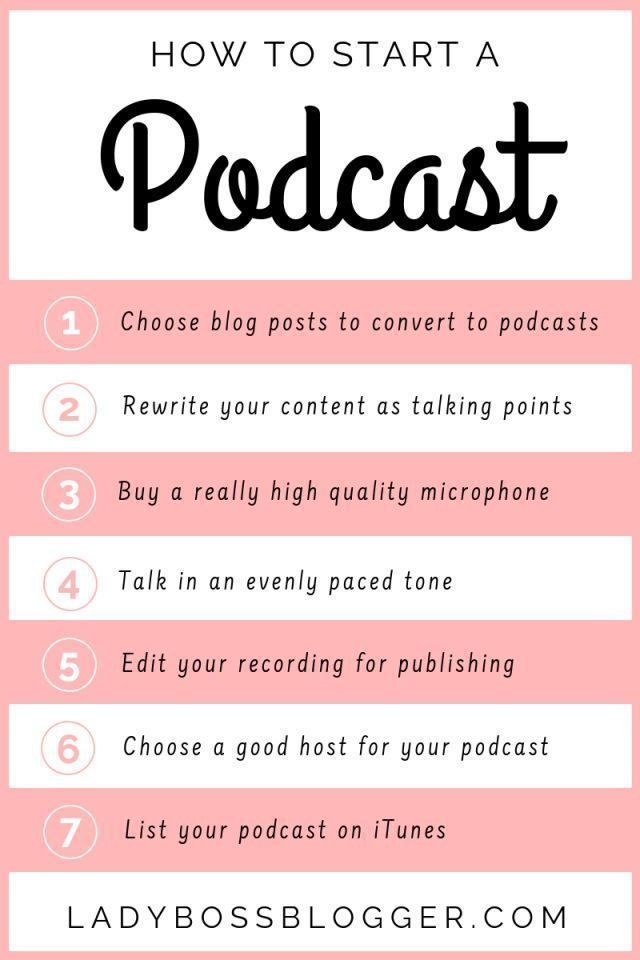 Bloggers can tag other users stories, and if they sell on Instagram, they can also tag a product.
Bloggers can tag other users stories, and if they sell on Instagram, they can also tag a product.
If you have more than 10,000 followers on Instagram, you can use a feature that allows a visitor to swipe up on the story. When a user swipes up on the content, it takes them to a URL of the story creators’ choice. This is a great place to insert an affiliate link.
Instagram stories let you see who viewed your story.
Comment and Like Users’ Posts
When you engage with another user’s content, they’re more likely to return the favor. The comments that you make on another post should be thoughtful, more than an emoji, and show that you actually read their captions. You don’t have to write a book—a sentence or two is the perfect length.
Follow Other Users
One of the biggest faux pas on Instagram is the follow-unfollow method. This is following a user only with the intention of them following you back and unfollowing them once they do. It’s a pretty common practice on Instagram to grow your followers in this way, however many consider it tacky.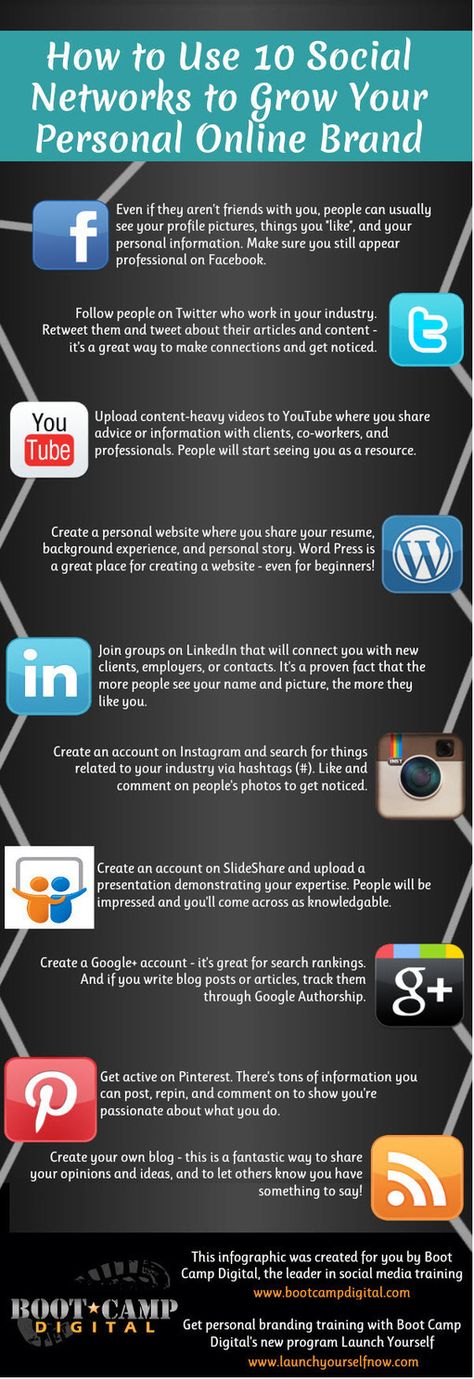
Instagram has said they’re working on policies to prevent this practice from occurring. Your best strategy for growing your own followers’ list is to authentically follow other users you want to follow.
How to Monetize Your Instagram Blog
There are many ways to make money on your Instagram blog. These monetization methods include being an affiliate for someone else’s products and services, creating sponsored posts, and selling your own products and services.
While any links you add to the caption area of a post will not be clickable, you can add a link to your bio. Some people choose to create a free account with a website provider, like Square Online, and host a list of links there. This is useful if you talk about different links in each post you make.
Otherwise, you can use linktr.ee, which is another popular place to list your URLs. As a blogger with an actual website, I prefer not to use linktr.ee because I want to get the page views rather than giving it to another service.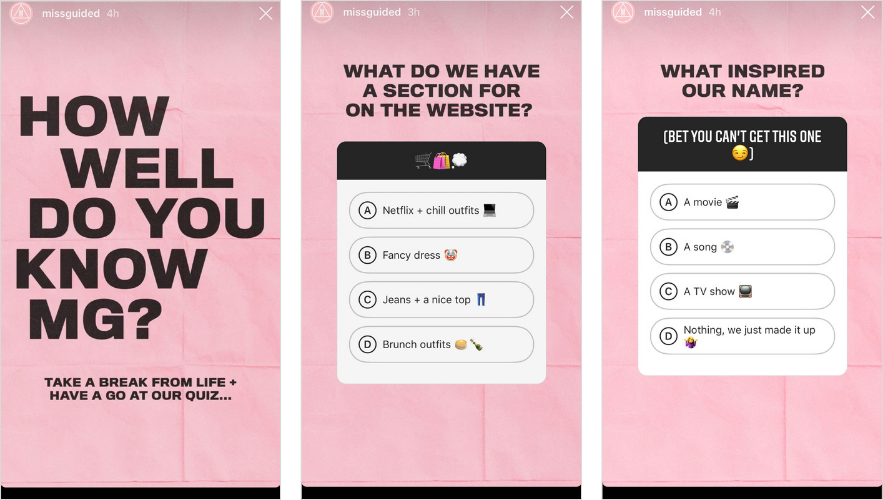 I’ve also seen instances where an update to the Instagram platform caused accounts using linktr.ee to temporarily shut down, so proceed with caution if using this method.
I’ve also seen instances where an update to the Instagram platform caused accounts using linktr.ee to temporarily shut down, so proceed with caution if using this method.
An example of a landing page that an Instagram account links to specifically for Instagram rather than using linktr.ee, but it operates just the same. (Source: The SweetLife Company by April Beach)
Use Affiliate Links
An affiliate marketing program lets creators earn a commission for referring sales to a merchant. These commissions are usually one to 10% of a sale, but sometimes pay if there’s a lead or a click on a custom link instead. Leads and clicks typically pay less than $1 each.
This is an attractive option for many Instagram bloggers because people usually talk about their favorite products and services anyway. They might as well get paid for it. Sometimes merchants and bloggers negotiate an incentive, like a 10% off coupon, for followers to use. This doesn’t usually eat into the commission an affiliate earns and instead comes out of the merchant’s marketing budget.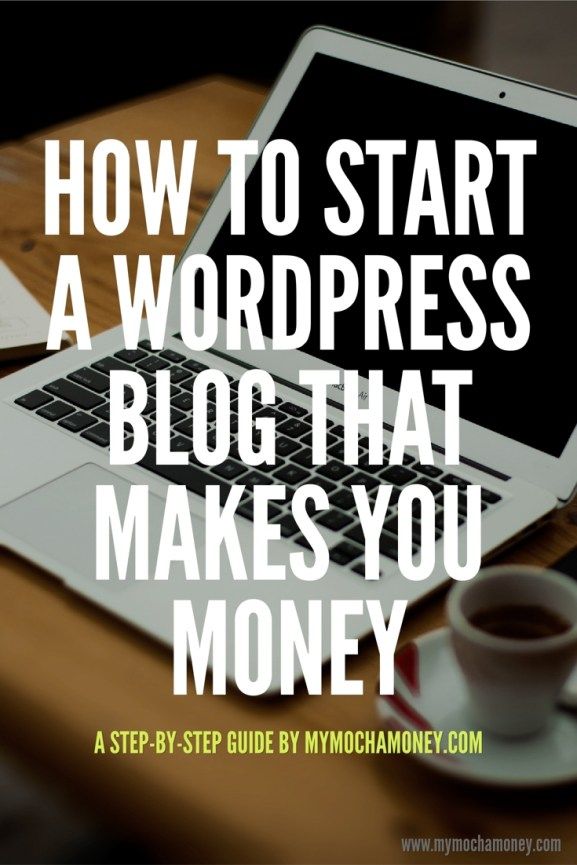
Instagram bloggers can sign up for an account with rewardStyle, which uses the LiketoKnow.it app to make it easy for them to share products featured in posts. The best part about this is that the blogger receives a commission for sales made.
An example of Instagram user @arrayoffaces using an affiliate code to promote a product.
Create Sponsored Posts
Instagram bloggers can create content for brands in exchange for free product, a discount, or money. What you earn for a post will depend on the number of followers and the engagement you receive. For example, a blogger with 15,000 engaged followers could earn around $200 for a post and $350 for a video. Instagram stories tend to pay less because they disappear after 24 hours. Learn more about setting your blog rates.
You can earn money even if you don’t have a lot of followers because brands tend to care more about engagement than vanity metrics. The reason for this is because it’s easy to artificially inflate the number of followers and likes you get by purchasing these.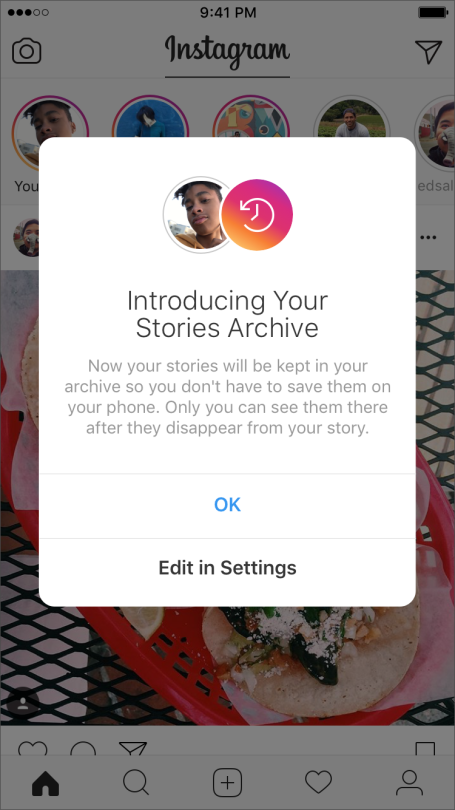 However, comments are much harder to artificially create. When you have an engaged audience, they’re more likely to trust you and listen to your recommendations.
However, comments are much harder to artificially create. When you have an engaged audience, they’re more likely to trust you and listen to your recommendations.
An example of a sponsored post by user @kkateli
Sell Your Own Products & Services
Creating your own products and services allows you to control not only the features, but also the production and quality of your offerings. You can create products like supplements, physical books, e-books, apparel, and kitchen gadgets. Services you can offer include design, consulting, and coaching—each of these tend to offer higher profit margins since you don’t need to create any physical goods.
If you don’t have an ecommerce website but have a few products you want to sell, consider using Square Online. This allows you to quickly create an online store using products featured in your Instagram posts—even past posts you’ve made. It takes just three quick steps to get started and you don’t pay anything until you make a sale.
Frequently Asked Questions (FAQs) on How to Start an Instagram Blog
This section includes the most frequently asked questions about how to start an Instagram blog.
How successful are Instagram bloggers?
There are Instagram bloggers who post regularly and have less than 100 followers and make nothing. You’ve also got bloggers who have millions of followers and also make millions of dollars. Your success will depend not only on how you measure success, but also your talent, resources, and commitment to blogging on Instagram.
How many followers do I need to be considered an influencer?
The number of followers you have on Instagram doesn’t determine if you’re an influencer. In fact, you can have five followers on Instagram. For example, if you make a post about a new tea mug to your five followers and they go buy that tea mug based on your recommendation, you have officially influenced that purchase.
How many followers do I need to get verified on Instagram?
The number of followers doesn’t matter when it comes to Instagram verification. Verification goes to accounts that are noteworthy, such as those who are often imitated. These include celebrities, athletes, and politicians. You can apply for verification and Instagram will conduct a review of your notable accomplishments using independent sources like news channels and magazines.
Verification goes to accounts that are noteworthy, such as those who are often imitated. These include celebrities, athletes, and politicians. You can apply for verification and Instagram will conduct a review of your notable accomplishments using independent sources like news channels and magazines.
Bottom Line
No matter the reasoning behind wanting to learn how to start an Instagram blog, you can get started very quickly. It takes just a few minutes to create your account, and then you’re ready to source images and create your first blog post. The benefits of using Instagram as a blog include getting to create captivating content very quickly without spending money, building a following, and potentially even making money from it.
How to Start a Blog on Instagram (2023 Guide)
Are you interested in being on Instagram?
I’ve had my Instagram account for a few years now, and recently I’ve been starting to grow my account and post more regularly.
But what if you don’t have a blog yet? Can you still be on Instagram?
The answer is yes, you can start a blog on Instagram, and I’m going to show you how!
Instagram is a popular social media platform any person can use, whether they have a personal blog, no blog, a podcast, printables, or courses.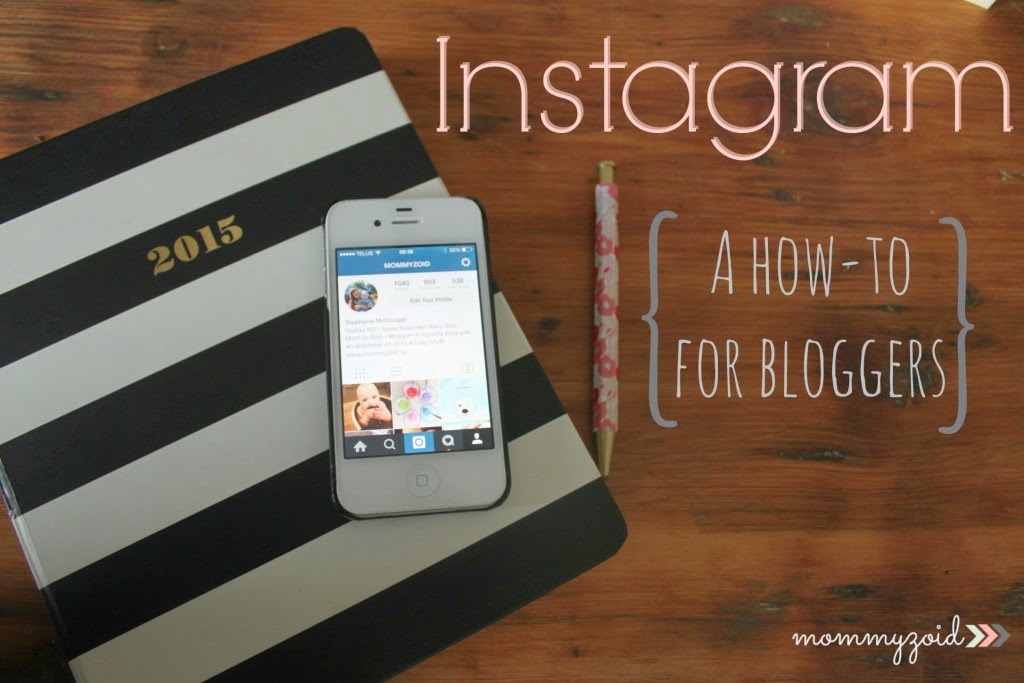
As of January 2022, 1 billion people and 71% of businesses are using Instagram.
On average, people spend 53 minutes on Instagram scrolling through Influencers promoting brands, and cute inspirational posts from their followers.
If you want to be on Instagram, I’ll help you start!
In this post I’ll go over what to share, how to find your niche, how to create different types of content, how to increase followers and finally, how to make money if you want to start a blog on Instagram.
What is a Blog on Instagram?
Having a blog on Instagram means a person with an Instagram profile sharing their life online.
It could be a blogger sharing their passion, whether it be content creation or selling real items like water bottles or skin care products.
You don’t have to have a separate website blog if you want to blog on Instagram, but it’s always nice to have another place online you can call your own.
You don’t own Instagram, so the content on Instagram doesn’t belong to you.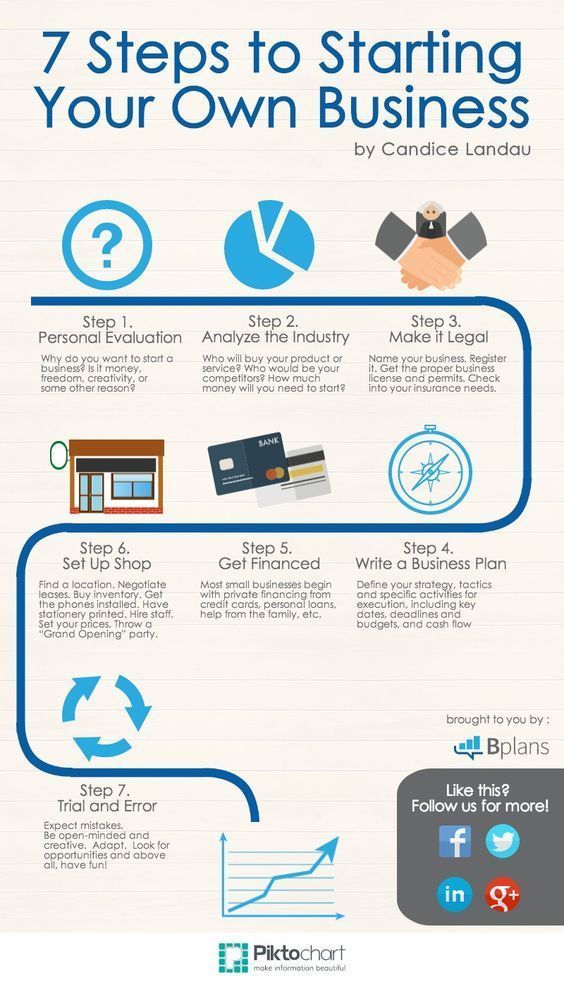
If Instagram decides to shut down your account or do something drastically different on their platform, you could lose your content.
That’s why I encourage you to start a blog on WordPress so you always own your content.
A WordPress blog is self-hosted, meaning you’re in control of what you put on your blog, and it’s a place where you can build a community.
But I understand if you don’t have a blog and want to start somewhere, then you can start on Instagram.
For example, Kailyn has a personal Instagram profile, and she shares her family and her life.
She doesn’t have a blog which means she’s using Instagram like a blog.
If you’re a blogger, create an Instagram profile like Biz Coach Jen and link to a landing page where you offer an incentive.
Many bloggers who have a business use landing pages to grow their email lists.
You can also start a blog on Instagram by linking to a podcast.
This is what Kristi Carden does on her Instagram profile.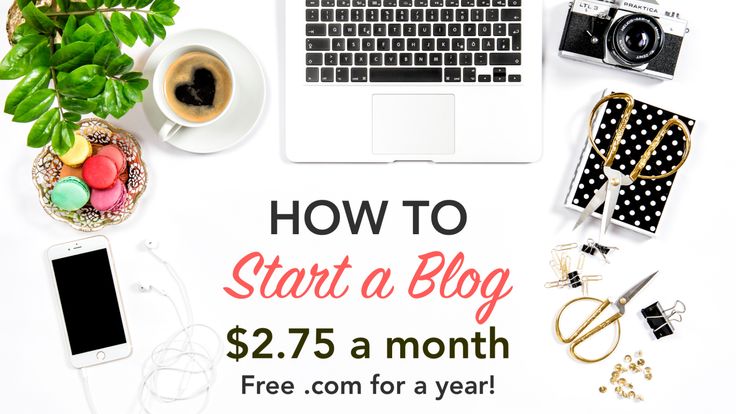
And, as you can see, these women don’t have a blog.
They are doing Instagram blogging or linking to a landing page for incentives, a podcast, or a calendar for coaching calls.
So you decide what type of Instagram account you want to have. If you want, learn how to start a food blog on Instagram, or learn how to start a fashion blog on Instagram. Pick a passion if that’s your choice.
My suggestion, though, is to start on Instagram and share aspects of your life.
When you start a blog on WordPress, you can link it in your Instagram bio, like The Laid Back Adventurer did.
This is ideal because you have hopefully generated a dedicated following on your Instagram profile by the time you start a blog.
Even if you want to learn how to start a mom blog on Instagram, you would be sharing parts of your life as a work from home blogger with kids on Instagram!
These followers can become subscribers of yours and would be the first step in creating a business from your blog.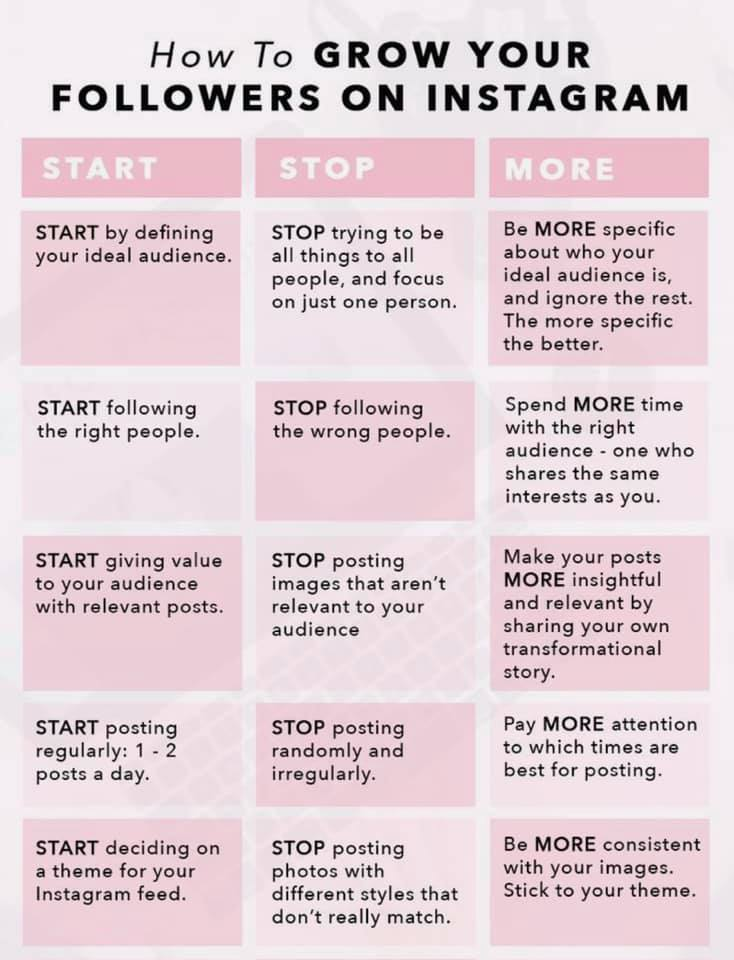
So, what are the steps to creating a blog on Instagram?
1. Create an Instagram Account
To start on Instagram, download the app from the Google Play Store if you’re on Android or the App Store if you have an iPhone.
Go ahead and follow the steps to create an Instagram account.
When setting up your account, one thing to remember is to set it to public and not private.
You want to have a public account because you want to grow followers and hopefully eventually start a blog out of all of this.
You did it!
You started an Instagram account, and now you can blog on it!
2. Decide on What to Share on Your Instagram Blog
Now that your account is up, the next thing you want to focus on is what you’re going to share on your Instagram blog.
One of the most popular things people share on Instagram is their life.
You might see pictures of a family outside or down by the beach, or photos of a beautiful home, or beautiful breakfast.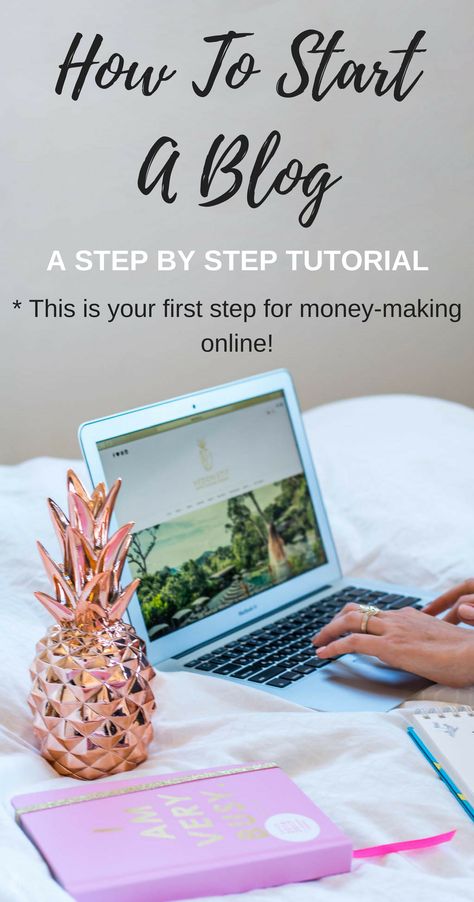
Here’s The Wendy Home’s Instagram profile and photos of her gorgeous home.
Another popular Instagram niche is fitness. Learning how to start a fitness blog on Instagram mean you would share your fitness life, fitness tutorials and maybe what you eat to stay fit.
If you’re not interested in sharing your life on Instagram at the moment, you can share inspirational quotes.
You can use a free image editing tool like Canva to make inspirational quotes.
Share a quote every day if you want, or twice a week.
Many Instagrammers will share your inspirational quotes (in their Stories), which will help you drive more engagement and followers on your profile.
If you have something to teach or tell, you can create an educational post on Instagram.
Sometimes posts can be a carousel post where you can share multiple pages in one post.
These types of educational pieces of content do well for business bloggers.
Here’s an example of what an educational piece of content on my Instagram profile looks like.
Finally, you can share all three types of content on your Instagram blog if you want.
For example, on Mondays, you can do an inspirational quote, on Tuesdays, you can do a lifestyle post, on Wednesdays, you can do an educational post and then start all over the following week.
No matter what you share, make an effort to share content when on Instagram.
To help you refine the exact types of content you’re going to have on your Instagram account, let’s go over how to choose a niche for a blog on Instagram.
3. Decide on Your Overall Niche
I’ve learned from having an Instagram account for a few years that it’s okay to have one or two niches to share with your audience.
For example, I’m more personal on my Instagram account and often share pictures of my children and family life.
But I also share business and educational content since I am using it for business purposes.
I’m also marketing to two different types of audiences: bloggers and freelancers.
So for me, I don’t think it’s hurting me by not focussing on one core niche.
It’s up to you if you only want to talk about horses, or you only want to talk about art, or you only want to talk about clothing.
If you end up niching down, you’ll grow faster and have a larger audience, but, for me, I’m okay with my profile and my niche.
But go ahead and jot down a few niche topics you would like to share on your blog on Instagram.
I would then create content or post around those topics and see if it resonates with your audience or grows your audience.
If you find your cat pictures aren’t resonating, you don’t need to share cat pictures anymore. Rather, focus on other pieces of content that you share instead.
There is no right and wrong answer in finding a niche for Instagram.
Play around and see what you enjoy posting and what gets engagement.
One way to help you with this is to follow other Instagrammers in your niche.
4. Follow Other Similar Instagrammers
Go ahead and start researching other Instagrammers who talk about the same things you talk about on your Instagram account.
You can search up “art blogger” or”food blogger.”
If you don’t want to follow bloggers, you can search for “my paleo life” and find people who share their paleo diet inspirations on their Instagram profiles.
Try to find at least 10 to 15 new Instagrammers to follow who are either in your niche or the surrounding niche.
For example, I follow other mom bloggers and freelancers, but I also follow micro-influencers.
This helps find my target audience and helps me with any content struggles. I can look to these micro-influencers, see what they’re sharing, and get some ideas if I’m stuck on what to share on my Instagram account.
After you follow 15 Instagrammers, wait a week or two, and follow another 10 to 15 Instagrammers.
By following new Instagrammers, you will also get followers in return.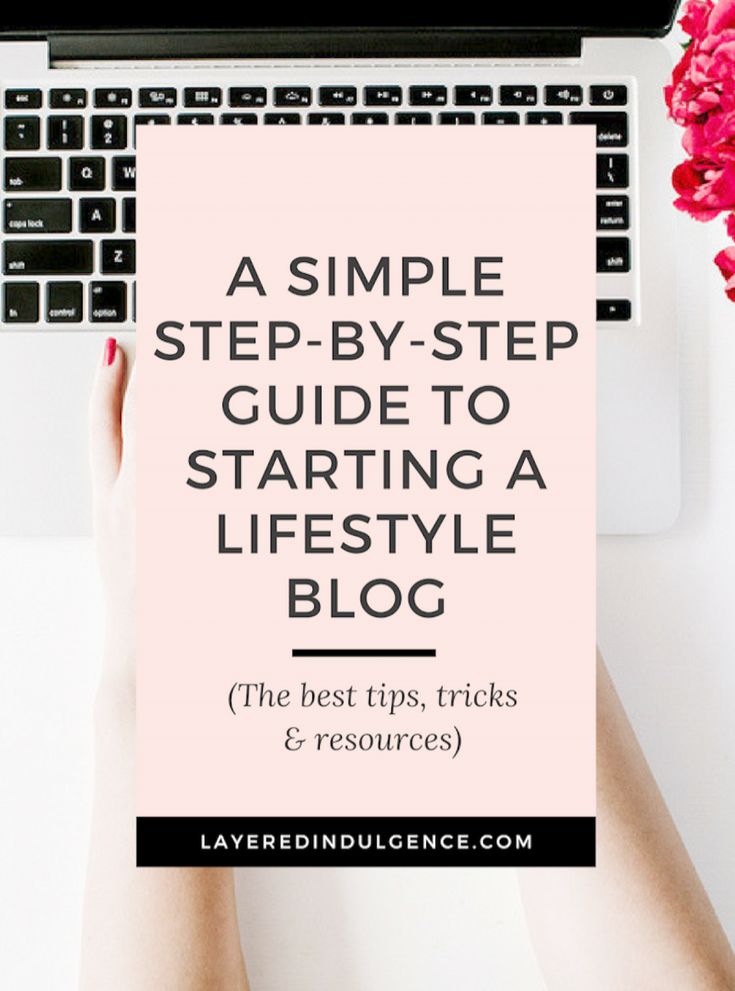
But be careful and not do an “if I follow you, you follow me back,” strategy.
Instagram doesn’t like that, so don’t always follow people that follow you, and don’t expect all the people you follow to follow you back.
5. Create an Instagram Blog Content Schedule
Now that you have some people you’re following, and people are following you back, it’s time to think of an Instagram blog content schedule.
You have to develop what is feasible for you to promote your Instagram profile.
Ideally, if you create content every day, such as a post or Reel, and then share it to your Instagram Stories, you will see growth happen quicker than if you only post once a week.
If you don’t know what Instagram Stories are, you can share content just for your followers to view once you have some followers.
Your profile picture lights up when you do that, indicating that you have a new Instagram story to share with your followers.
If you can only post once a week, that’s okay.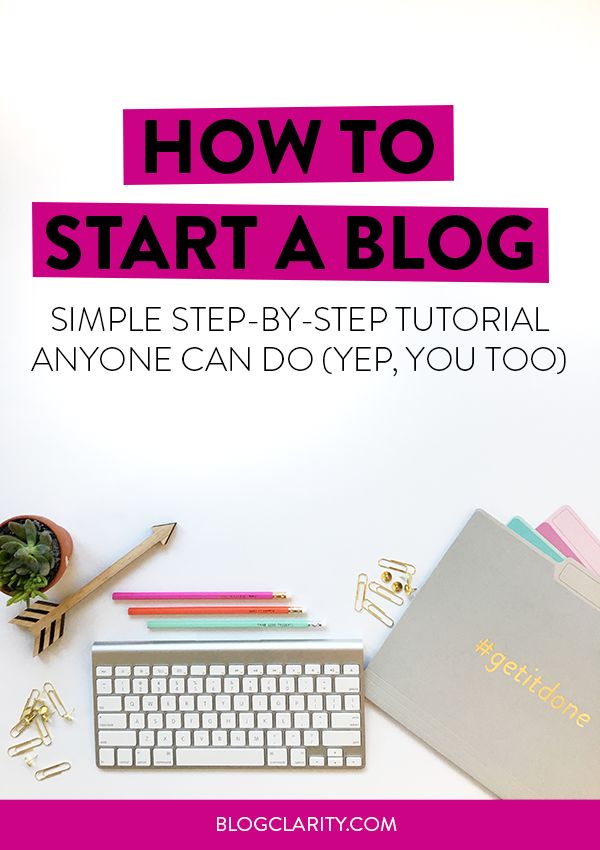
Give yourself grace.
I often struggle with having a consistent Instagram schedule because I run several blogs, email lists, and several social media profiles.
But I recently created an Instagram Weekly Schedule to help me get on track.
Using this method, I can create all my content for the month or every two weeks.
This is something I’ve never done before, so I’m looking forward to how an Instagram blog content schedule will work for my profile.
You can easily create your schedule using Canva. Here’s what my schedule looks like.
And to help you get your post seen by more people, I want you to start incorporating hashtags.
6. Create a Hashtag Swipe File
Hashtags are like keywords for Instagram.
You can run a Google search to find Instagram hashtags in your niche.
When you find hashtags, go ahead and create a swipe file.
You can use Google Docs to track all your hashtags for your niche.
When you start using hashtags on posts, people who also search Instagram with those terms might see your post.
My suggestion when picking hashtags is to pick ones that are no more than 1,000 searches.
If you choose hashtags with a million searches, you’ll have a hard time getting your content seen.
If you end up using hashtags for every post you create and that makes sense to you, you’ll see more engagement and more followers to your Instagram account.
But it’s up to you if you want to start using hashtags.
7. Create Your First Post
All right, it’s time to create your first Instagram post!
I started my Instagram account years ago, and I let it lay dormant.
But when I started Twins Mommy, I wanted to revive my Instagram account.
So one of the first pieces of Instagram content I did to reintroduce myself to my small audience I had at that time was to create a vision board.
This proved well for me, and it helped me get more engagement and people talking about my vision board.
I then shared my vision board with my stories to give my post more impact.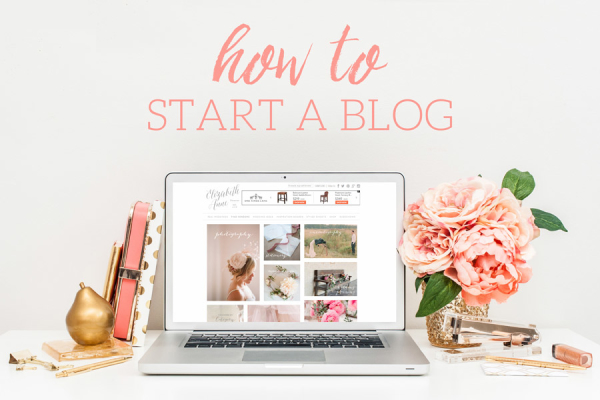
So my suggestion is to be truthful and honest with your first post.
You can post a picture of yourself, introduce yourself, and share your story if you want.
Or, you can do what I did and share a creation you made.
Whatever it is, I want you to create a post for your new audience.
8. Learn How to Create a Carousel Post
Once you create your first post as the Instagram user, you can start thinking about other posts to create with your blog on Instagram.
As I mentioned, you can create a carousel post with educational content.
This post has several pages that people have to swipe to view the entire post.
You can easily create this with Canva for free. Canva makes it easy with templates such as carousel templates.
Find a style you like and then add your branding colors and style to the photo.
Here’s a template I branded.
9. Learn How to Create a Reel
Reels are huge right now on Instagram.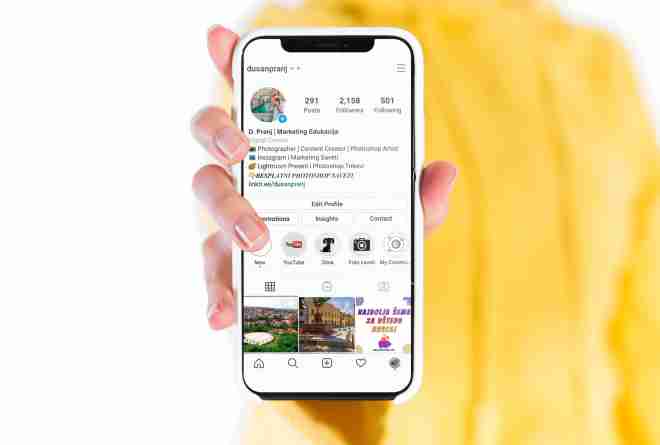
You can get 22% more engagement than a regular post when you post a Reel.
Video marketing is also growing, and Reels are like mini videos you can share on your profile.
There are many ways to create a Reel video.
Many people sit and talk in front of their camera to create their Reel.
When they make their Reel using Instagram, they can add text to it.
Other types of Reels incorporate music and dancing.
I’ve tried different types of Reels, but I like to create picture-based Reels, which I can easily make in Canva.
*Here’s my video showing you how I create my Reels in Canva.
9. What to Share on Your Stories
As I mentioned earlier, your Stories are things you share with your core audience.
If you’re brand new and don’t have many followers, you don’t have to update your stories every day.
But once you have some people following you, it’s a good idea to create content to help them with whatever they’re going through, update them on what’s happening with you, or provide help and inspiration.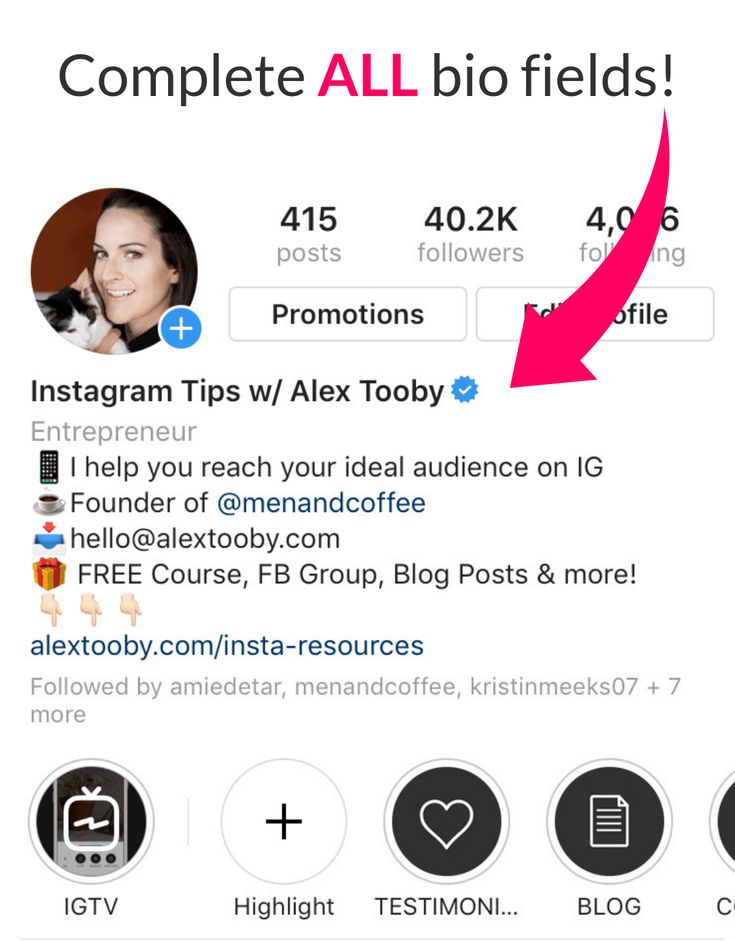
You can also share any posts, or Reels you created to your Stories.
One popular way to use stories is to create an “Ask Me Anything” or AMA tag.
When you post an AMA tag, followers can ask questions, and then you can go on your stories and answer them.
This is a great way to share authentic and personal content to your core audience to let them know who you are.
A great example of doing an AMA is Cathrin Manning.
She’s a YouTuber, but she uses Instagram regularly and often uses it for Stories to ask questions and to help her audience.
This is a fun activity, but it does take all day since you are waiting for questions that pop up on your phone and then quickly answer them.
But if this is something you like doing, I encourage you to try to do this once a week.
Another type of video you can do is an Instagram live.
These go on your feed and in your video tab.
With all this content you are creating, make sure to check your Instagram insights to see how many clicks and likes you received from your content!
Now that we’ve covered what to post and different types of posts, let’s get into how to can grow your followers with your blog on Instagram.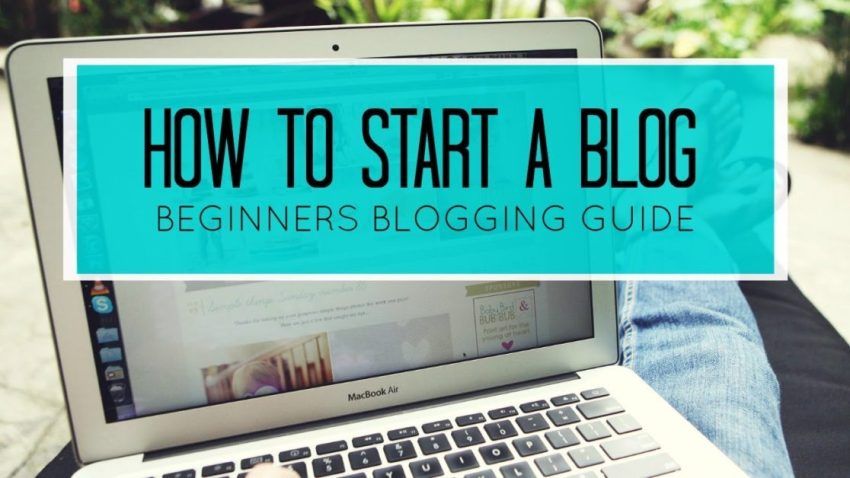
One of the biggest struggles new Instagrammers face is growing followers.
They don’t understand why people follow, and then the next day, they lose followers, and it becomes an uphill battle to gain five new followers a day.
This is normal because people who follow you want you to follow back, and as I mentioned, this is not a great practice to do on Instagram or any social media platform.
Most likely, you’ll see new followers and then hours later or the next day fewer followers.
So how can you grow your followers if you keep losing them?
With these five ways!
1. Post Every Day If Possible
An easy but challenging way to grow your followers is to post every day.
It doesn’t have to be time consuming, though.
Sharing a picture of yourself and a one-line caption or an emoji is enough to update your blog on Instagram.
This is something that Gillian Perkins does as she only updates her Instagram profile weekly.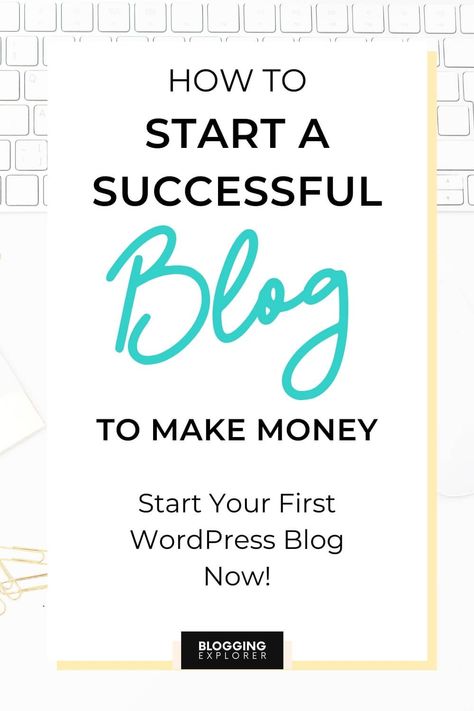
By using a weekly schedule, you can figure out what you want to post every day, making yourself accountable for posting on Instagram.
If you find that posting every day is too much to do then be consistent at least with posting once a week or twice a week.
In either case, by being consistent and regular, you will start growing your followers.
2. Engage With Other Instagrammer’s Posts
A great strategy you can do and doesn’t take a lot of time is to engage with other posts you see on your feed.
While I don’t do this every day, I will start scrolling through my feed to check out other people’s posts when I have a few extra minutes.
This can often create a conversation between the poster and yourself.
Here’s an example how my comment on Natania Creates‘ post generated engagement for her.
However, one thing to note is to be meaningful when you reply to other people’s posts.
Simply liking the post or adding one emoji isn’t enough to develop a connection between the poster and yourself.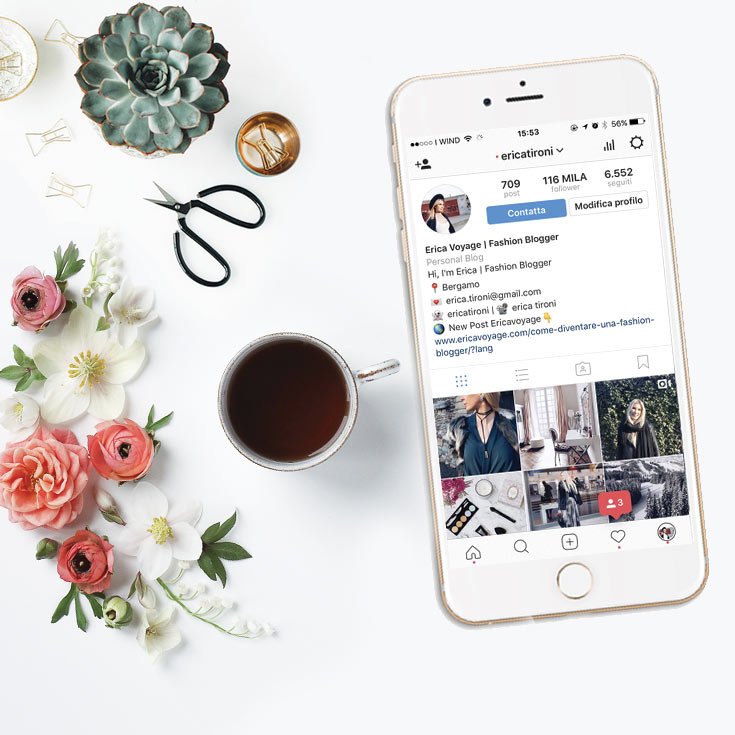
But if you connect meaningfully, you’ll gain followers over time.
So give it a try and post thoughtful replies when you scroll your feed.
3. Share Other Instagrammer’s Content
An easy way to get on the radar of other Instagrammers is to share their content in your Stories.
This is something I try to do every day when I don’t have anything to share about myself and I want to update my Stories.
I’ll often find a quote that someone posted or an informational piece of content and share that to my Stories by adding something like, “This is spot-on!” or “I have to check this out.” When you do this, you can gain followers from the people tagged when you share their content.
So, if you struggle to update your Stories try this method out.
4. Sign Up for Freebies
If you’re scrolling through your feed and you find something interesting, go ahead and click on the person so you can visit their profile.
Look to see if they have a link to a page or blog and if they do, go ahead and sign to their free incentive they are offering.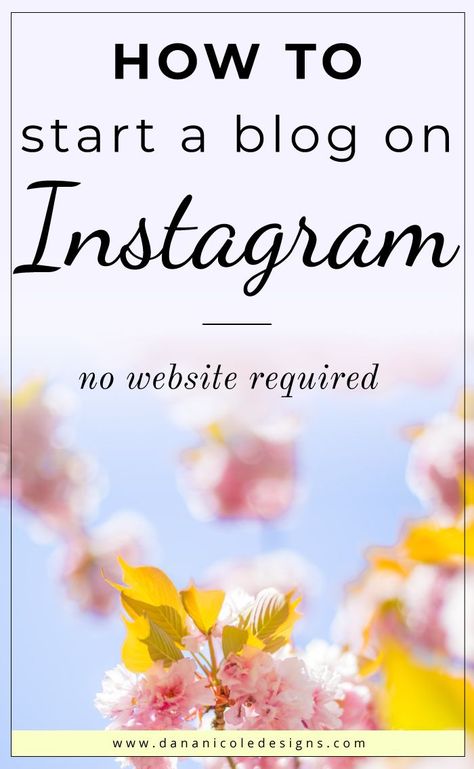
By doing this, you can connect with the Instagram poster differently.
You’ll be receiving emails from them where you can reply and ask questions and develop a relationship outside of your blog on Instagram.
And this could lead to a new follower.
5. Provide Helpful or Inspiring Content
Make sure the content that you provide is helpful or inspirational.
By providing valuable content and replying to responses, I increase the engagement on that post and gain new followers.
So make sure in your weekly schedule for Instagram, you’re providing something that’s helpful or something that’s inspiring.
Now that your blog on Instagram is somewhat thriving, you might be wondering if you can make money on Instagram.
How to Get Paid on Instagram (How Many Instagram Followers Do You Need?)It is possible to get paid on Instagram with just a thousand followers?
Marketing leader Neil Patel clarifies that with followers of 1000, your content has to be engaging, which means people will share and comment or like your post.
He says, “Brands are willing to invest in you because of the profitable actions you’ll drive through your account,” Patel adds.
Doesn’t that sound very promising? Make sure not to strive for 1000 followers, though. What I mean is don’t make your whole strategy on Instagram only to grow your followers.
When you focus on value, you have a chance of making money on Instagram.
If this is something you want to do with your blog on Instagram, you need to make sure you have a business account on Instagram.
Let’s look at three ways you can get paid on Instagram.
1. Get Sponsored
Sponsors often look at smaller Instagrammers to share their product vision.
To get in front of a sponsor, make sure you know exactly who your audience is, provide valuable content and use specific hashtags or even locational hashtags when you post.
Make sure your Instagram bio has contact information so if a sponsor sees your post and user profile, they know where to contact you.
I would then start tagging brands in your photos.
For example, I recently purchased a new Fitbit watch and tagged Fitbit when I posted it on my Instagram profile.
When you’re ready, you can start pitching to sponsors.
Here is a list of some sponsors that tailor to small Instagram profiles.
- Tribe
- Webfluential
- Ifleunz
- Aspireiq
- Trend
- Famebit
- Globalinfluence
- IZEA
Make sure you know your value when you pitch to these companies.
Even if you have less than 1,000 followers, portray to these companies your followers are brand ambassadors that watch your IG lives, like and engage with your posts and support you 100%.
Companies want followers like this and will pay top dollar for for your sponsored content.
And writing a sponsored post isn’t that hard either! Have fun sharing what you love to your audience and the words will come!
2. Offer a Service
Another way you can get paid on Instagram is to offer a service.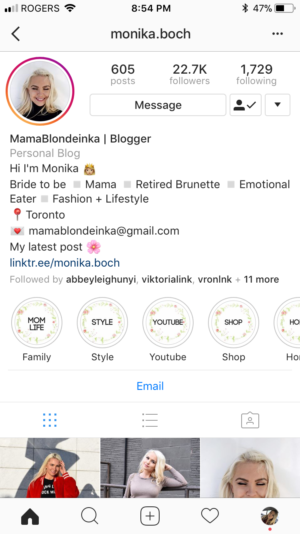
This is what I’m doing with my Instagram profile.
I am marketing my SEO copywriting services for software-as-a-service digital brands and my email writing for coaches and creatives.
By advertising my service and providing helpful content around it, I can locate my ideal target client and connect with them before pitching them.
This method has worked, and I have landed three clients this way.
If you need help figuring out what service to offer, check out my post on Side Business Ideas.
3. If You Go Live You Can Earn Badges
If you enjoy going live on Instagram, you can earn Badges, and where people can purchase badges, helping you make money.
To enable badges, go to your profile and tap Professional Dashboard.
If you’re eligible to be monetized, you’ll see something like Set Up Badges.
If you don’t see this, you can apply by tapping Apply for Monetization and checking your Professional Dashboard for updates.
Your badges will automatically be enabled once you go live on Instagram if you’re approved.
To prepare your blog on Instagram to make money, here are the niches that do well on Instagram.
Popular Instagram niche topics:
- Beauty – Apparel, Jewelry, Skincare
- Health – Kombucha, natural products that are eco friendly
- Home decor – showing off your perfect room or house drives engagement and sponsorships
- Fitness – living a healthy lifestyle is popular on IG, and you can promote lots of health products from shoes to smart watches
- Food & Cooking – plant-based lifestyle and showing recipes are trending and popular
When deciding your niche when you blog on Instagram, consider one of these popular Instagram niches that do well.
Create a content plan on showcasing different areas of your niche. For example, if you’re in the health niche, your content week might look like this:
- Monday – Showcase your new athletic gear and tag the company
- Tuesday – Take a picture of you drinking Kombucha and use an inspirational quote in your caption
- Wednesday – Go Live and do a 20 minute yoga stretch routine
- Thursday – Turn that Live into a Reel
- Friday – Do an AMA on your Stories
Finally, if you want to know who the most popular influencers on Instagram are, they are:
- Cristiano Ronaldo
- Ariana Grande
- Dwayne Johnson
- Kylie Jenner
- Selena Gomez
Each of these influencers has over 200 million followers.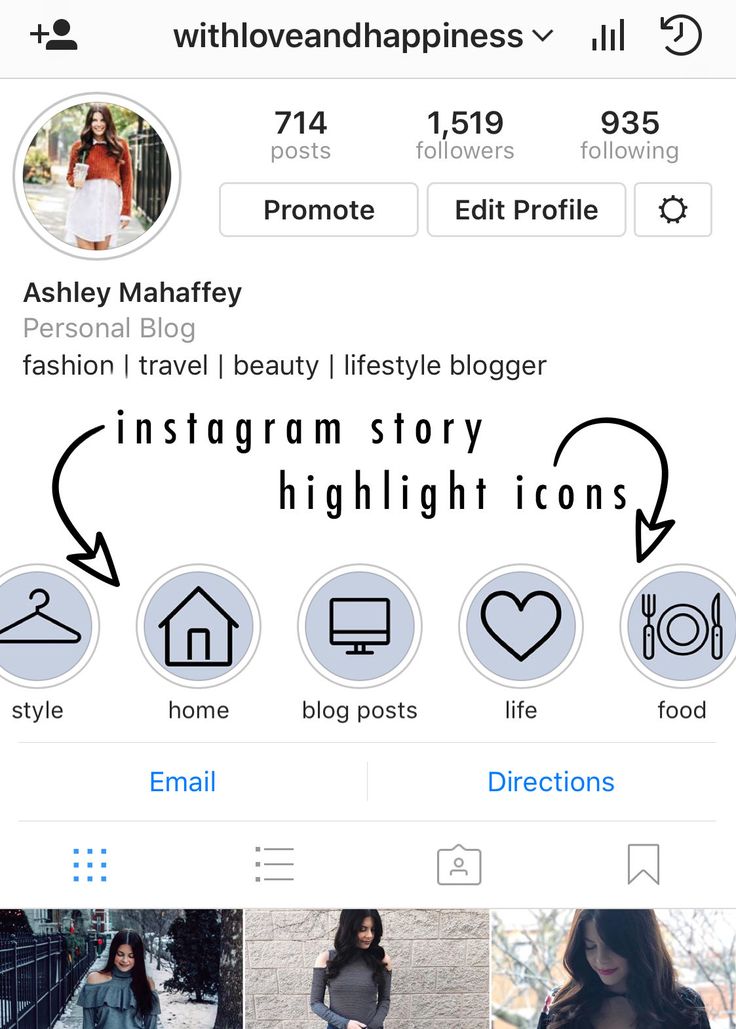
Follow each Instagram influencer (and check them on your Instagram feed) and learn how they engage with their audience, if they promote any products and how they style their photos.
With your new blog on Instagram, you can start adapting those tactics to form a solid brand your followers will love!
There Ya Go!That’s how you start a blog on Instagram.
You’re an Instagram blogger now!
Tell me in the comments below are you excited to start on Instagram?
And don’t forget to pin me and I hope you enjoyed my blog post!
How to run Instagram the right way: making your account successful
Instagram has evolved from a social network where people share news and photos of food to a blogging platform. The audience is used to quality content, and the competition is high: you compete with users from all over the world, because photos do not care about language or geographic location, and professional models, photographers, makeup artists and artists also actively use the social network.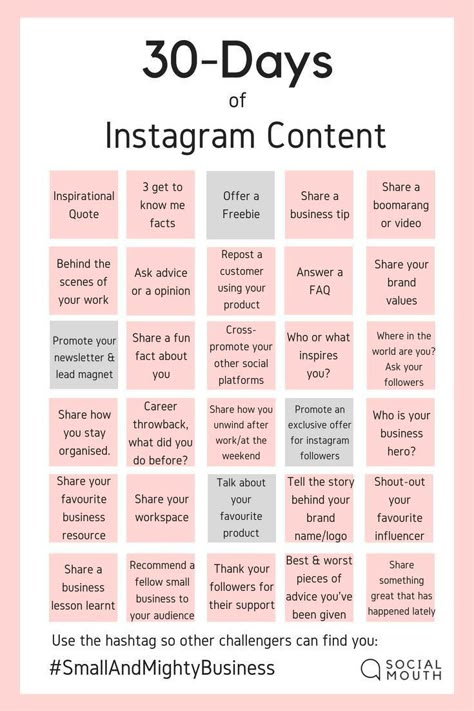 Of course, many do not know how to manage Instagram so that it develops and generates income.
Of course, many do not know how to manage Instagram so that it develops and generates income.
But everyone has a chance to find their audience. Both schoolgirls from small towns and big brands with interesting content are becoming popular on Instagram. We figure out how to come up with a concept, take photos, write posts and maintain an Instagram account so as not to sink to the bottom of the algorithmic feed, but to find subscribers.
How to Instagram
Instagram is not just your page on a social network. Of course, no one will forbid sharing news with friends, we are talking about blogging on Instagram for a person or business, which will be of interest not only to your loved ones, but also to strangers.
Look at the pages of stars: they rarely combine photos with each other and generally bother with content, but fans are interested in any news from the life of idols. If you do not have a couple of million fans, you will not be forgiven for low-quality and uninteresting photos.
Start with an idea. Even if it’s hard to decide, and “taking pictures of everything that surrounds me” seems like the best way out, focus on a specific topic. Culinary blogs, profiles about proper nutrition, about dancing, about clothes, make-up - yes, Instagram already has it all. But you will do it your way. And people don't collect a list of subscriptions based on the principle "I already subscribed to a food blog, so I don't need another one."
Of course, if your idea is interesting and relatively new, it will be easier to move forward. But if you don't find one, don't give up. Maintaining Instagram is constant experimentation and finding a balance in content and interaction with the audience.
How to be in business? You need a concept too. Remember the character of the brand, decide on the tone of voice. Create value for subscribers: talk about topics related to your product. Consider that SMM from 2010, when beauty salons could post "10 hairstyle ideas" and get thousands of likes, is in the past.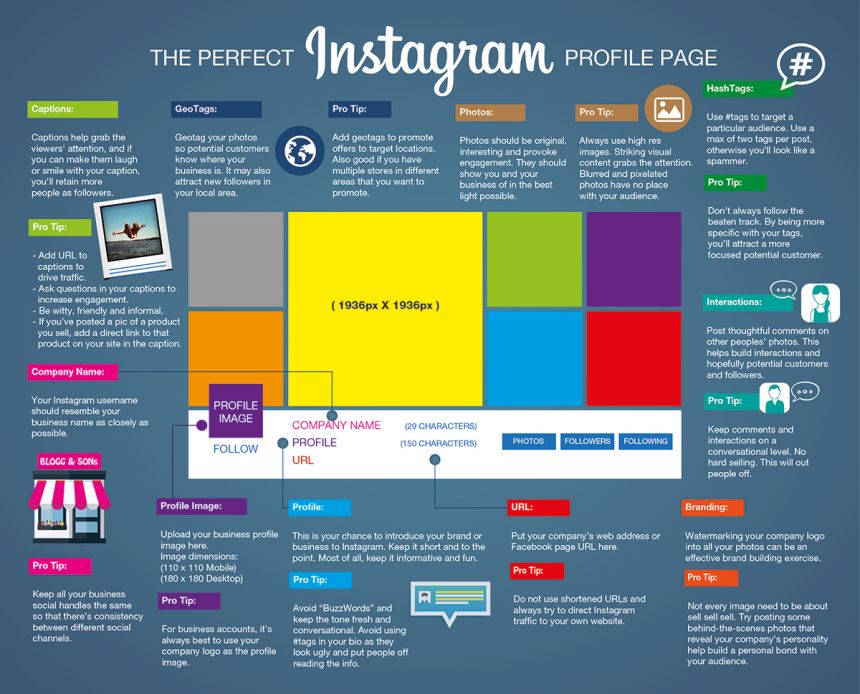 People won't subscribe to something they can google. Create authoring content: create a branded character or choose your storytelling style and list of topics you can cover.
People won't subscribe to something they can google. Create authoring content: create a branded character or choose your storytelling style and list of topics you can cover.
Instagram profile design
At first glance, your account should be clear what it is about. Briefly formulate the topic of the blog in the bio and tell us about yourself. Typically, users enter their first name, age, and city.
How to get a business account to start Instagram?
The company account must contain contacts, information about the work of offline points and detailed conditions for ordering or recording. If you are unable to fit all the necessary information in your bio, you can use the multilink service.
Use emoji to highlight different information blocks in your bio. It is not necessary to choose bright and intrusive ones: dots, arrows, squares will look neat, but everyone will visually separate the text (name and topic of the blog) in meaning.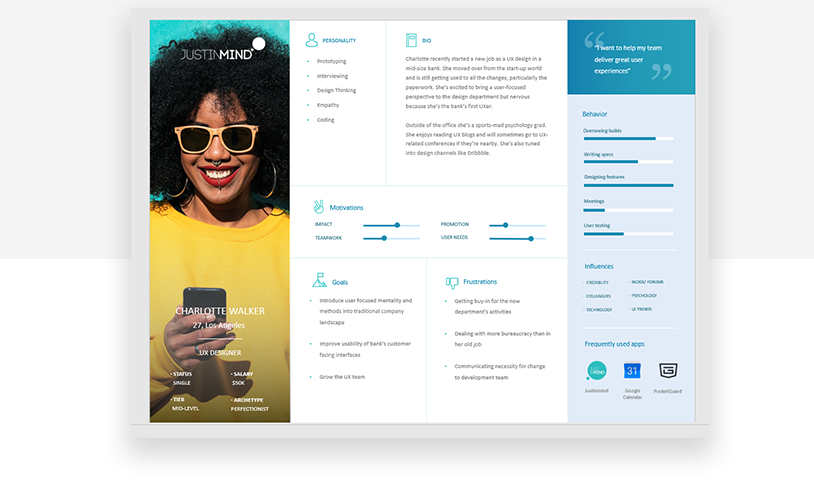
How beautiful it is to have Instagram
There is an unspoken rule: profile photos must match. Open the pages of bloggers again: you will surely notice that the pictures standing next to each other were taken in the same tone or overlapped with each other in vivid detail.
A Facebook study showed that users spend 0.2 seconds per post on the mobile feed. Therefore, your posts should be visually cool and catchy at first sight. Let's figure out how to manage Instagram to be qualitatively different from others.
Photos must be of high quality, interesting and well processed. Instagram has its own trends - just try to bring photos processed in the Retrica app to your audience.
Follow Audience Members to find the visual style for your profile. See what content they post, what profiles they follow.
It is not necessary to use professional equipment, but you will definitely have to learn how to photograph and process images. See the photos you like, save them, don't be afraid to repeat, you're unlikely to be seen through, but you'll get your hands on it.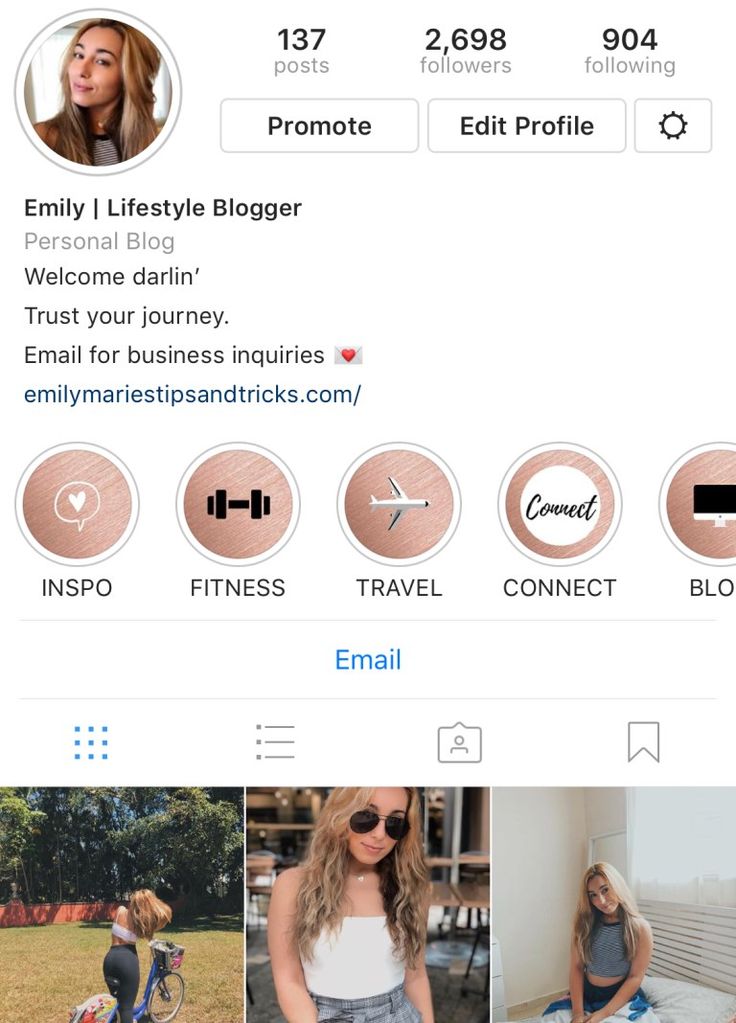
Layouts - a separate big topic. Think this is a joke? Try to create something similar yourself. You will find that you don't have many items that match. And those that exist cannot be organically placed in the frame.
To make high-quality layouts, bloggers buy accessories (candles, sparkles, postcards, fruits, garlands, frames, flowers) and spend a lot of time on them.
How to blog on Instagram
In 2017, a new trend appeared on the social network: users are interested not only in photos, but also in texts. Thematic blogs have appeared that talk about proper nutrition, makeup, motivation, parenting, or just about your life. And judging by the number of subscribers on such accounts and interactions under publications, users are ready to consume not only visual content in contact, but also read texts, even long ones.
Therefore, the desire to create and maintain an Instagram blog may be a good idea. But first, how to lead it? As with the concept of an account, a blog also needs one. Define a list of topics you write about, designate them in the profile header.
Define a list of topics you write about, designate them in the profile header.
Follow the pages of users whose content you like. Pay attention to how often they publish posts, at what time they do it. How the audience is asked questions in posts, and what topics the audience is discussing more actively.
Instagram post contains up to 2200 characters. If your text does not fit in this size, move the part to the first comment, this is a common practice among bloggers. The problem will arise if there are too many discussions: then users will have to get to the first comment in the topic for a long time. Therefore, it is better to shorten the texts or split the story into several posts, publishing them under one hashtag.
How to broadcast on Instagram
Anyone can broadcast on Instagram. After the end, it will be available, like stories, 24 hours.
To start the broadcast, go to the news feed, click on your profile picture (just like when creating Stories). Select the option "Live" in the horizontal menu below. Now by clicking "Start" you will be able to broadcast live on Instagram.
How to attract an audience to a live broadcast?
Warn your subscribers about the broadcast in advance: make an announcement in a post or story. Pick a time when your audience is online. To do this, analyze the social network account in Popsters. On the chart "Activity / Days of the week" and "Activity / Time of day" you will find the most successful days and times for live broadcasts.
Wait for a larger audience, don't jump straight into the main topic of the broadcast. But at the same time, you can’t lose the audience who have already arrived: figure out in advance what will take the waiting time. Tell stories about the topic of the broadcast or arrange an interactive one: answer subscribers' questions or, conversely, ask them about something.
How to start Instagram?
Keep step-by-step instructions for maintaining an Instagram account:
- Decide on a topic if you're blogging.
- Find a photo style and processing style that you will follow.
- Follow competitor accounts and profiles you want to be like.
- Fill out your profile: choose a bright avatar, write in the "Bio" section about yourself and the topic of your blog.
- Make several publications in the new concept. In order for new visitors to be able to get an idea about the account, 6-8 posts are enough.
Useful related articles:
- 10 advanced Instagram tools;
- Effective Advertising in Instagram Stories: Actionable Tips;
- Guidelines for creating an Instagram profile description;
- How to correctly set up and run ads on Instagram.
How to make a personal blog on Instagram - ideas, post topics, blog header
A year ago, I heard from my friends: “Now, if I started my personal blog on Instagram in time, I would already ... And now what's the point?”. A year has passed and, as it turned out, the meaning was. Those who did not delay and started working then came to certain results: someone monetized their profile, someone strengthened their personal brand and found new customers. Yes, there was less competition before, but now the audience on Instagram is much wider. The main thing is that this social network is actively developing, and, therefore, “biting off a piece of the pie” is still quite real.
In this article, we will talk about how to create and prepare for promotion a personal blog on Instagram, which will not only take your time, but also work for you.
Advertising: 2VtzqwCpaPT
Read also : The best Instagram promotion courses
What is a personal blog on Instagram and what is it for
In a broad sense, a personal blog is a place where the author shares his thoughts and ideas. A personal blog on Instagram is a page that can be used to demonstrate one's own expertise, increase the degree of trust among subscribers, work on a personal brand, and promote goods or services. Of course, in order to achieve such results, you need to work hard and daily on visuals, texts and promotion.
But blogging opens up new possibilities. Thanks to a developed profile on Instagram, you will be able to:
- launch new services: courses, master classes, marathons;
- receive additional income from advertising;
- increase sales and find new customers for your business;
- find partners and get profitable offers of cooperation;
- to influence a warm audience that trusts you.
There are also disadvantages :
- Blogging requires daily work. If you fall out of the process, you can lose the loyalty of the audience.
- In order to unwind, investments will be required. Potential costs may be needed for a photographer, copywriter, SMM manager, targetologist. Of course, you can do some of this work yourself, but in any case, you will need an advertising budget.
- You will not feel the result immediately.
Building a quality audience is a long process.
- Blogging is hard work. You will need to interact with subscribers, respond to their comments, regularly prepare useful and interesting content: photos, videos, texts.
Why keep your personal blog on Instagram
Very often, personal blogs are kept by the “poke method”. They try everything and see how it goes. The reasons are different: lack of time to sit down and properly understand the algorithms of the platform, stereotypes that it is enough just to blog and sales will skyrocket, a frivolous attitude to the profile, etc. I have always said that it is difficult to expect any tangible result without planning and analysis.
Before you do anything, ask yourself important questions:
Why do I need a blog? Do you want to become a blogger and sell ads? Download an expert personal brand? Sell services/products? Any other goals?
An example of a profile of a successful bloggerWhy will people follow me? If you rely on a personal brand and professional expertise, then think about why a person needs to read you every day, what will you give him? Favor, humor, stories, advice? What will your raisin be?
An example of an expert profileHow will I be different from others? Not only experience and quality! How are you really different from them? Why should clients choose you?
Only when you have clearly articulated the answers to these questions can you start writing a blog that will not only take your time, but also bring benefits. It can be successfully monetized or strengthen your own personal brand. In addition, a promoted profile always brings new opportunities and offers.
How to create a personal blog on Instagram: step by step instructions
Choosing a blog topic
Depending on your goal, decide on a topic. It should be interesting not only to you, although this is also important, but also be relevant to your target audience. Think about what kind of followers you want to see on your profile, and then guess what topics might hook them.
Find related blogs and study them. Please note that on Instagram these are not only direct competitors, but also those with whom you compete for the attention of the target audience. For example, if you are going to promote hair services and write about beauty, then you need to analyze not only the blogs of masters with similar services, but also pages that basically write about the beauty industry.
To stand out from the competition, try to find your own niche. Do not be afraid to take narrow topics - this way, on the contrary, you will be able to attract a better audience. For example, instead of a psychologist "of all trades", you can blog "family psychologist". Instead of a stylist "for everyone", position yourself as a "stylist who dresses moms."
Creating a new account
Many times I have seen users change the theme and format of the same blog several times. It is a pity for them to lose the accumulated audience and it seems that it is easier this way. But think about this. Let's say you used to write book reviews and now you've decided to blog about marketing. What makes you think that your old audience will be interested in a new topic?
Most likely, many people will start unfollowing your profile, Instagram algorithms will regard your blog as uninteresting and start showing it less. In addition, there are always risks that there may be some kind of blocking on the old profile. Therefore, most often, I still recommend creating separate pages for new goals. Although, of course, situations are different. First, we register a page on Instagram and translate it into the “Personal Blog” format.
- Go to your profile, open settings and select "Account".
- At the very bottom of the list, click Switch to Professional Account.
- When choosing a profile type, select "Business" and select the "Personal Blog" category.
- Specify the contact details that you consider necessary. You can change or add them at any time.
- Link your Facebook page. If you do not plan to promote your profile with targeted advertising in the near future, you can click “do not link to Facebook” for now
Please note that you can choose any category you like. For the most part, it doesn't affect anything.
Making a personal blog
In order for the profile to work, you need to properly “package” it. Before you start working on attracting new subscribers, make sure that your page is ready to receive "guests". Pay attention to the following points.
Nickname should be simple, easy to read
Try to use one or two words. Minimum dots and underlines. Ideally, the nickname should be memorable and associated with your area or positioning.
These are good examples : @style.mom, @zapiski_introverta, @kraski_v_gorode.
But this is not very good : @shnayatirkeysmt, @457525sharipat.
Bright and high quality avatar
Since Instagram is first of all a social network, your personal positive photo, where you can clearly see your face, is best for your avatar. Even if you have a very beautiful logo, but no one knows it, and it will not tell users anything, putting it on an avatar does not make sense.
These are good examples :
On the avatar there is a personal photo that arouses sympathy On the avatar of the owner of the blog with her product, the photo illustrates the theme of the profileBut this is not very good :
the photo doesn't say anythingTitle
The line "name", the line in bold should contain keywords that you can be searched for.
Only this line affects the formation of the search and the list of issue. Therefore, you do not need to be original here, you just need to work with the most popular queries.
This is a good example :
The profile name has common search queries on topicsThis is not so good :
There are no words for potential subscribers to search for a similar blog. This phrase is best omitted in the profile header
Profile header
Must include your unique selling proposition and offer (an offer that is valid right now).
I also recommend using an individual author's hashtag, by which users can immediately see your best work or the most important posts. Use verbs in the formulations: I will tell, I will teach, I will show, I will do, etc.
These are good examples :
This header has a catchy phrase, it’s immediately clear what this blog is about This header has emotions and an appealBut this is not very good non-clickable phone, no unique offer
Links
Active links to instant messengers, website or multilink.
With a clickable link, you can indicate a convenient way to contact and provide information that may be useful to subscribers or customers.
One of the most common ways is to link to WhatsApp.
Here is a good example of a link: wa.me/79991111111
You can simply replace the digits of the number with your own and set it to your profile in the "site" field. When you click subscribers, they will immediately transfer to a dialogue with you in WhatsApp.
This is not very good : https://api.whatsapp.com/send?phone=79991111111
This link is too long and will not look nice on the blog. You can make it more “pretty” with any link shortening service.
Profile menu (actual stories)
These are clickable circles where you can save the stories you want. They can contain all the information for potential customers and subscribers. For example, reviews, price, description of services, work process, selection recommendations, behind the scenes.
How to create a menu from pinned stories?
This menu is called "Actual". Someone calls it “eternal stories”, somewhere you can find the name “Highlights” - their essence does not change from this. There can be as many circles of eternal stories as you like. You yourself adjust the quantity, edit the titles and select the covers to your taste.
To create a new circle, go to an already published story and click on the "Select" button in the lower right corner:
In the window that appears, write the name that will be displayed on the Instagram page. If you don't fill in the name, the default name will remain "Actual":
How to make covers
To make the profile menu match the visual concept of the entire page, you can add your own covers for eternal stories. To do this, use either the most ordinary pictures, or create special ones. For example, this functionality is available in the Canva app.
To replace the cover, go to the existing circle and click on the "More" button in the lower right corner:
Select "Edit current":
you can edit the name of the circle or insert the desired cover:
What to write on a personal blog: 10 ideas to start
In order for all content (posts, photos and stories) to be united by a common idea and lead your profile to the goal, there it makes sense to pre-plan a content plan. Below are a few post ideas to get you started.
Post-acquaintance
For an outside reader, it doesn't make much difference whether you are a blogger or a clothing brand. In both cases, you are interested because you can be of some use. Benefits are not only training or advice. Laughing is good. Find out how you organized your family trip, of course, too.
Therefore, write in this text not so much about yourself, but about how you will be useful:
An example of an acquaintance post from a developer of educational toys blogRead more : How to write a welcome post on Instagram
Instruction post
Any instruction can be written dryly, or creatively and cheerfully. Choose your format depending on the goals of the blog. In any case, if the topic is relevant to your subscribers, such posts go with a bang.
Post before/after
Tell your subscribers what results can be achieved by using your product or service. You can show by example or describe the client's story.
An example of a before/after post on a personal blog of a fitness trainerUseful selection
Make a useful selection of books, a travel list, or something else that matches your topic. Such posts are always very well preserved.
List of resources to study in the personal blog of a Korean teacherChecklist
This is a post-memo to help subscribers prepare for some event or check themselves / their actions.
Checklist post on personal blog about IndiaPost-history
Stories are always more readable than plain text. They are remembered, they are easier to perceive. You can tell a personal story that will reveal some of your positive qualities, or describe a story about clients - the main thing is that it harmoniously fits into the blog theme and evokes the necessary emotions.
An expert post
Such posts allow you to show your subscribers what you understand about your topic. The most important thing is that the post contains exactly your personal opinion on the issue, and not general recommendations that everyone already knows.
Expert post on the targetologist's blogBehind the scenes post
Show what's going on inside you. How do you create your products? How do you provide services? It is interesting and increases the degree of trust. You can capture a video and speed it up in the editing application.
Post from the artist's profile, which was published along with the process videoPost-review or case study
Take any feedback from the client and "shoe" it into a story. Tell us why the client contacted you, what were the expectations, what did you get in the end. Attach screenshots with testimonials to the carousel.
Post-review from the astrologer's personal profileSelling post
Tell us about your services or products, describe their characteristics, advantages and benefits for subscribers.




